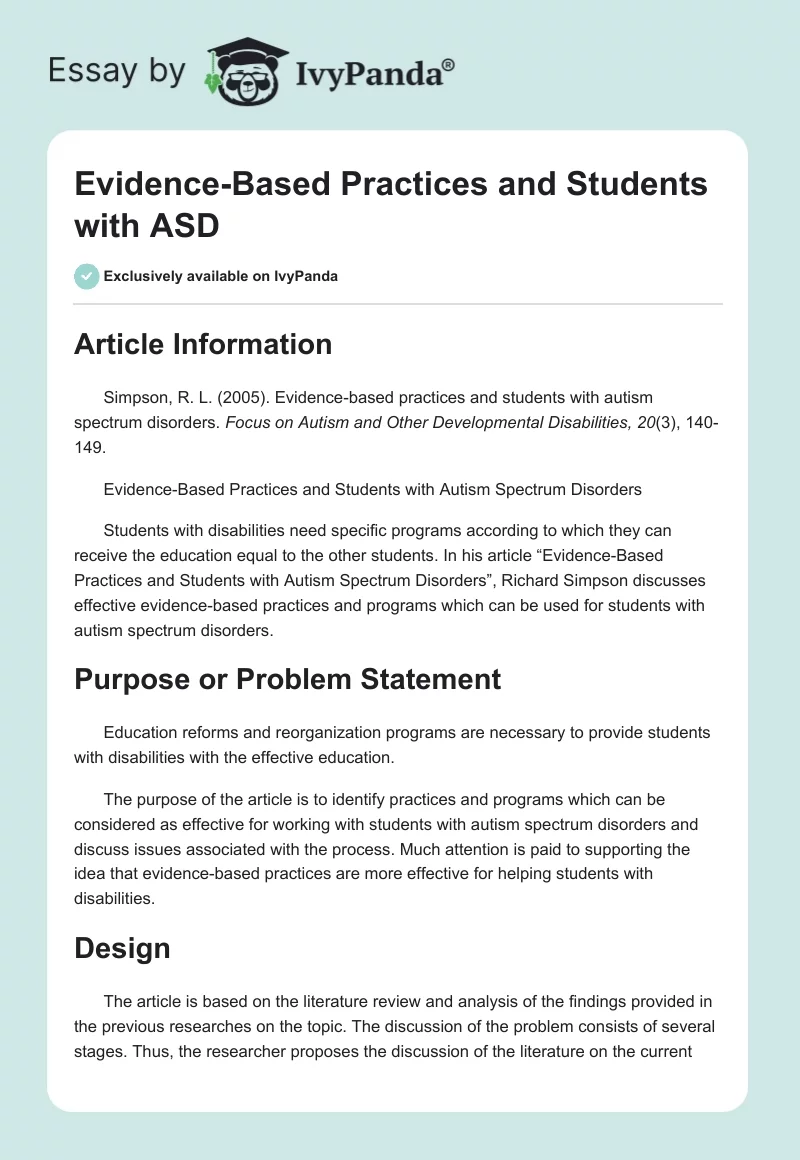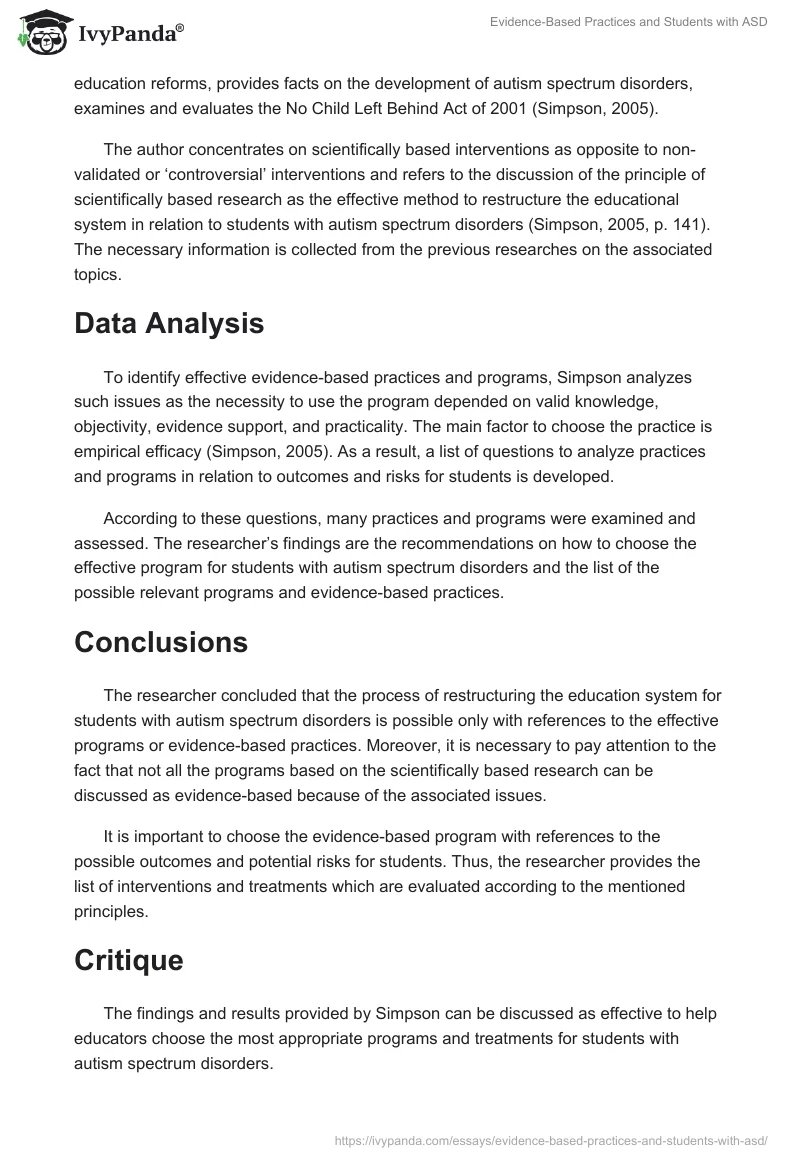Article Information
Simpson, R. L. (2005). Evidence-based practices and students with autism spectrum disorders. Focus on Autism and Other Developmental Disabilities, 20(3), 140-149.
Evidence-Based Practices and Students with Autism Spectrum Disorders
Students with disabilities need specific programs according to which they can receive the education equal to the other students. In his article “Evidence-Based Practices and Students with Autism Spectrum Disorders”, Richard Simpson discusses effective evidence-based practices and programs which can be used for students with autism spectrum disorders.
Purpose or Problem Statement
Education reforms and reorganization programs are necessary to provide students with disabilities with the effective education.
The purpose of the article is to identify practices and programs which can be considered as effective for working with students with autism spectrum disorders and discuss issues associated with the process. Much attention is paid to supporting the idea that evidence-based practices are more effective for helping students with disabilities.
Design
The article is based on the literature review and analysis of the findings provided in the previous researches on the topic. The discussion of the problem consists of several stages. Thus, the researcher proposes the discussion of the literature on the current education reforms, provides facts on the development of autism spectrum disorders, examines and evaluates the No Child Left Behind Act of 2001 (Simpson, 2005).
The author concentrates on scientifically based interventions as opposite to non-validated or ‘controversial’ interventions and refers to the discussion of the principle of scientifically based research as the effective method to restructure the educational system in relation to students with autism spectrum disorders (Simpson, 2005, p. 141). The necessary information is collected from the previous researches on the associated topics.
Data Analysis
To identify effective evidence-based practices and programs, Simpson analyzes such issues as the necessity to use the program depended on valid knowledge, objectivity, evidence support, and practicality. The main factor to choose the practice is empirical efficacy (Simpson, 2005). As a result, a list of questions to analyze practices and programs in relation to outcomes and risks for students is developed.
According to these questions, many practices and programs were examined and assessed. The researcher’s findings are the recommendations on how to choose the effective program for students with autism spectrum disorders and the list of the possible relevant programs and evidence-based practices.
Conclusions
The researcher concluded that the process of restructuring the education system for students with autism spectrum disorders is possible only with references to the effective programs or evidence-based practices. Moreover, it is necessary to pay attention to the fact that not all the programs based on the scientifically based research can be discussed as evidence-based because of the associated issues.
It is important to choose the evidence-based program with references to the possible outcomes and potential risks for students. Thus, the researcher provides the list of interventions and treatments which are evaluated according to the mentioned principles.
Critique
The findings and results provided by Simpson can be discussed as effective to help educators choose the most appropriate programs and treatments for students with autism spectrum disorders.
Although the study is mainly theoretical in its nature, the findings and discussion presented by Simpson can be used in practice to evaluate programs and choose the most effective methods to work with students with autism spectrum disorders.
From this point, the information provided in the article can be considered as sufficient because it discusses the problem of education for students with disabilities from many perspectives and presents the credible evaluation of the No Child Left Behind Act and associated scientifically based research methods.
Furthermore, the article and results responds to the CEC Advanced Standard 3 because of contributing to improving educational programs and developing the effective services for students with disabilities.
Reference
Simpson, R. L. (2005). Evidence-based practices and students with autism spectrum disorders. Focus on Autism and Other Developmental Disabilities, 20(3), 140-149.


